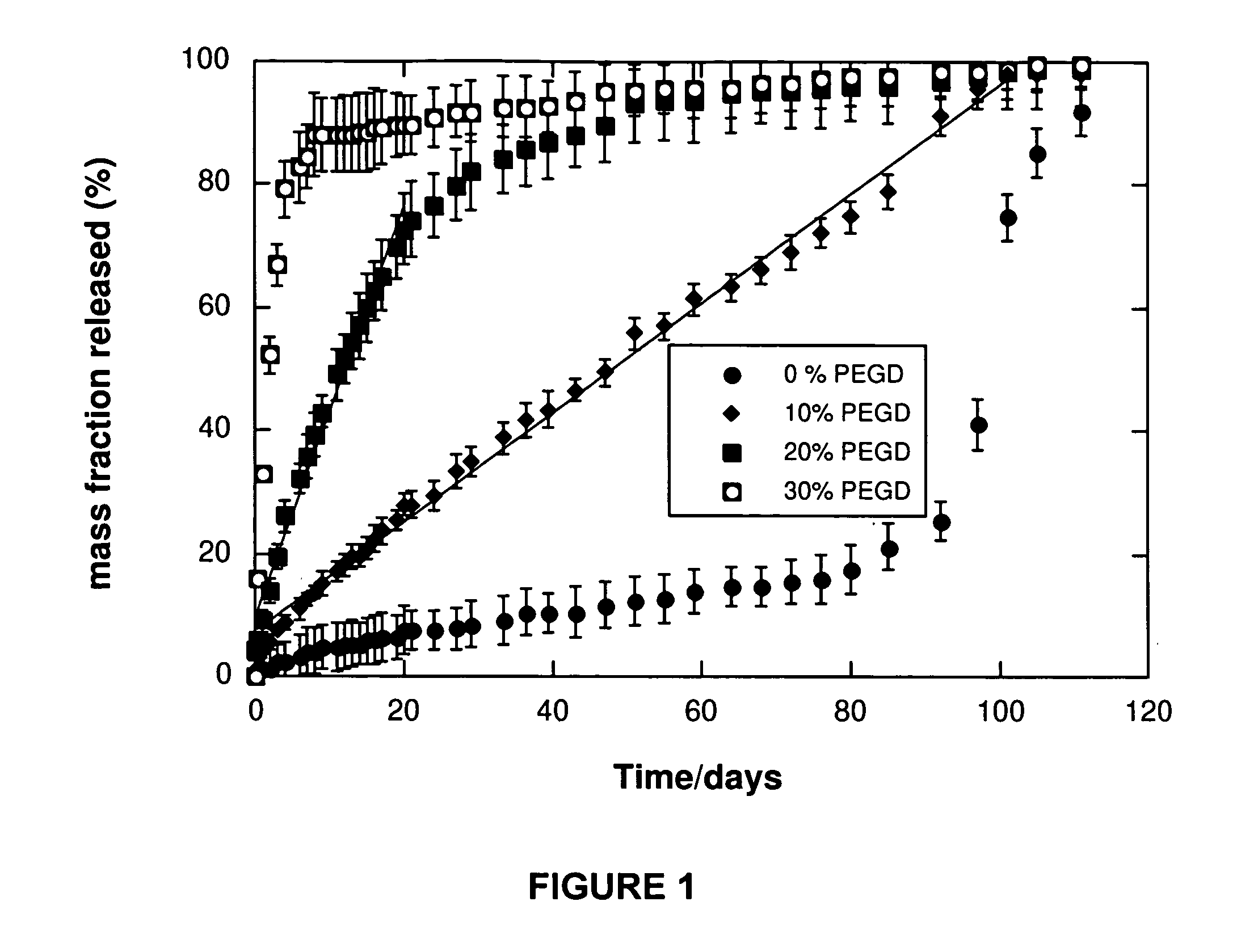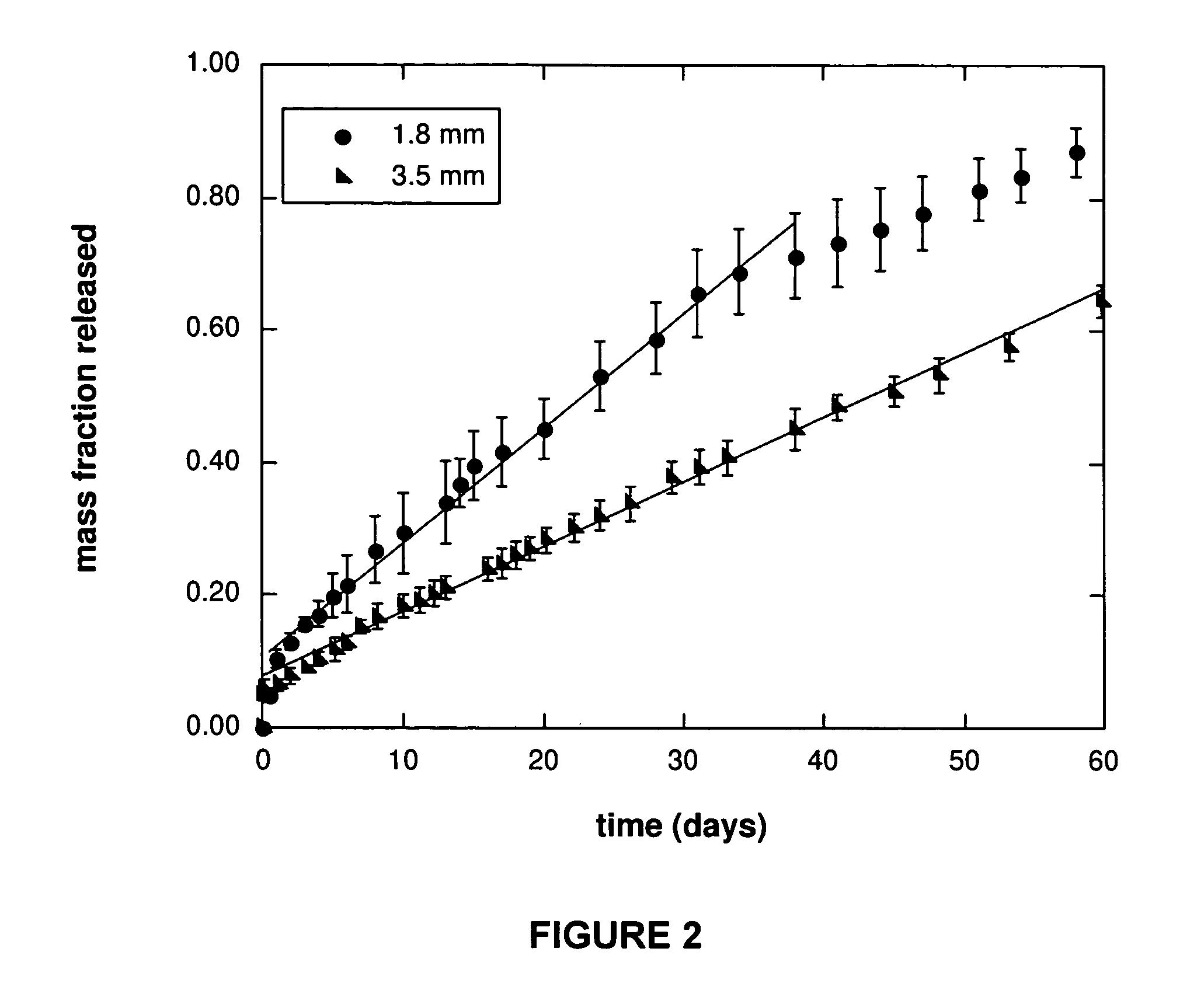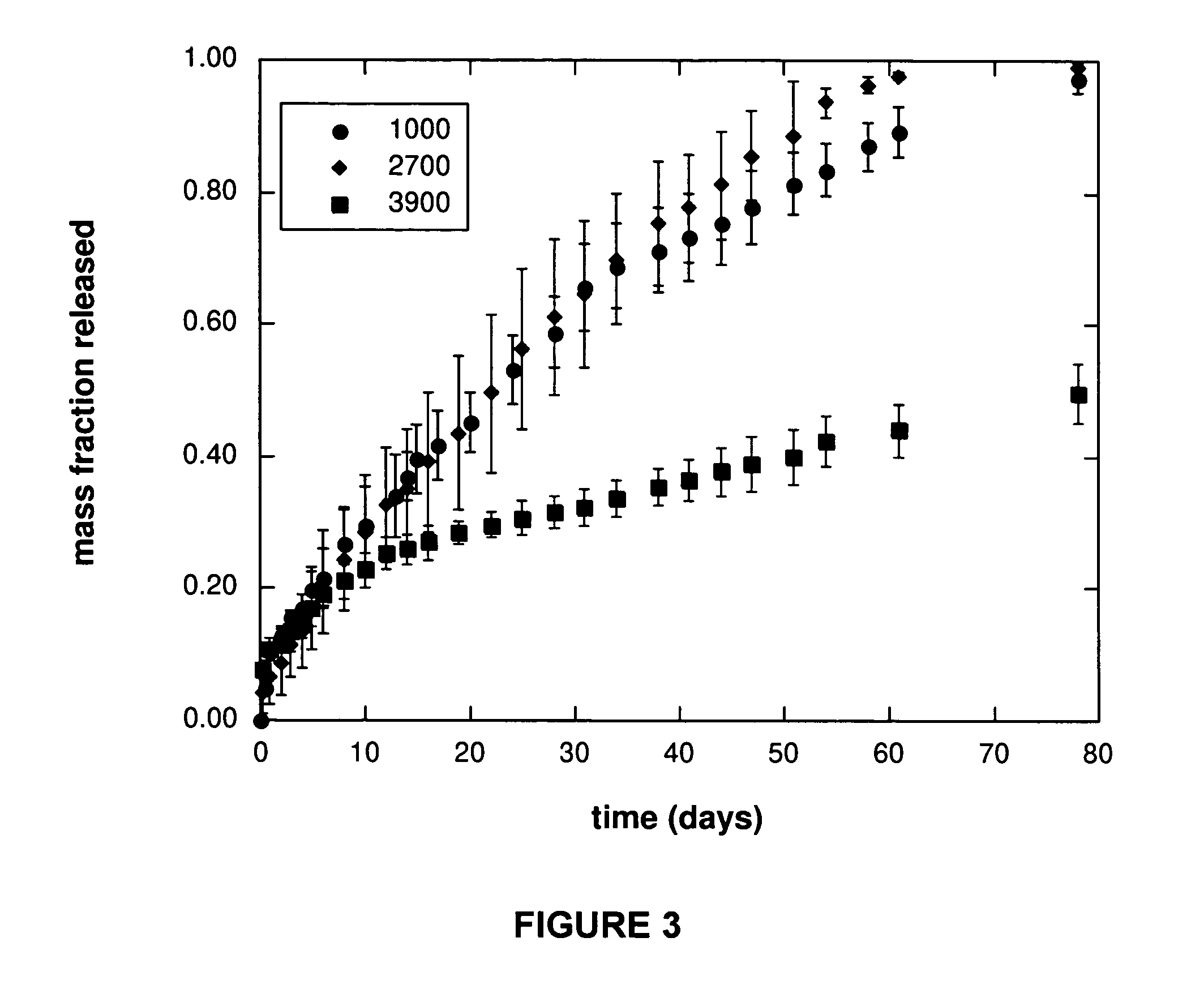Degradable elastomeric network
a biodegradable, elastomeric technology, applied in the direction of prosthesis, peptide/protein ingredients, antibody medical ingredients, etc., can solve the problems of short biological half-live, easy degradation when administered by conventional routes, short biological half-live, etc., to achieve the effect of increasing the release rate of agents and reducing the content of hydrophobic polymers in the network
- Summary
- Abstract
- Description
- Claims
- Application Information
AI Technical Summary
Benefits of technology
Problems solved by technology
Method used
Image
Examples
example 1
Delivery of Vitamin B12 as a Drug Analog
[0110] In this study, we examined an amorphous hydrophobic star co-polymer co-cross-linked with a hydrophilic polymer (poly(ethylene glycol)diacrylate) to yield networks having less than 30% poly(ethylene glycol)diacrylate, and incorporated a low molecular weight drug analog as solid particles during the free radical cross-linking reaction. Vitamin B12 was used as the drug analog because it has a molecular weight (1355 g / mol) similar to that of many peptide drugs, and is readily detectable due to its red color. The loading of vitamin B12 was kept to 1 w / w %, and means of modulating its release from the cylindrical matrix were investigated.
Materials and Methods
[0111] D,L-lactide (99%) was obtained from Purac (The Netherlands) and used as received, while ε-caprolactone was obtained from Lancaster (Canada), dried over CaH2 (Aldrich, Canada) and distilled under vacuum in a nitrogen atmosphere. Other chemicals used were stannous 2-ethylhexanoat...
example 2
Demonstration of Effect of PEG Molecular Weight on Release Rate
[0130] Acrylated star-poly(ε-caprolactone-co-D,L-lactide) (ASCP) of molecular weight 2700 g / mol was co-dissolved in tetrahydrofuran with poly(ethylene glycol)diacrylate (PEGD) of molecular weight 4000 g / mol or 24000 g / mol. The total polymer concentration was 1 g / mL THF. The mass ratio of PEGD:ASCP was 1:9 (10% PEGD). In this solution was suspended vitamin B12 particles that had been ground and sieved to less than 100 μm in diameter. The total mass of vitamin B12 to polymer was 1:99 (1% vitamin B12). 1.5 w / w % of 2,2-dimethoxy-2-phenyl-acetophenone (DMPA) photoinitiator was also included. The suspension was injected into a 1.8 mm diameter glass tube to a length of 34 cm and sealed with parafilm. The tube was then held and rotated slowly by hand under a long-wave Black-Ray AP UV lamp with a filter of 220 nm to 480 nm at an irradiation intensity of 100 W / cm2 for 5 minutes. The parafilm was removed to allow for solvent evap...
example 3
Influence of Drug Solubility on Release Rate
[0131] Goserelin acetate and vitamin B12 were incorporated into cylindrical polymer matrices as described in Example 2, but using only PEGD 24000 g / mol. Goserelin acetate is a peptide having the sequence Pyr-His-Trp-Ser-Tyr-D-Ser(tBu)-Leu-Arg-Pro-Azagly-NH2 acetate salt. Its molecular weight is 1269 g / mol and it has a water solubility of 20 mg / mL at 25° C. The molecular weight of vitamin B12 is 1329 g / mol and it has a water solubility of 12.5 mg / mL. The diffusivities of these two compounds was determined at 37° C. using Pulsed Field Gradient Nuclear Magnetic Resonance. The measured diffusivities were 2.8±0.1 and 2.6±0.1 (10−6) cm2 / s for vitamin B12 and goserelin, respectively. These diffusivities are essentially the same. In vitro release experiments on these cylinders were performed as described in Example 2. The results are given in FIG. 8. The goserelin was released at an appreciably faster rate as indicated by the regression line draw...
PUM
| Property | Measurement | Unit |
|---|---|---|
| Percent by mass | aaaaa | aaaaa |
| Temperature | aaaaa | aaaaa |
| Glass transition temperature | aaaaa | aaaaa |
Abstract
Description
Claims
Application Information
 Login to View More
Login to View More - R&D
- Intellectual Property
- Life Sciences
- Materials
- Tech Scout
- Unparalleled Data Quality
- Higher Quality Content
- 60% Fewer Hallucinations
Browse by: Latest US Patents, China's latest patents, Technical Efficacy Thesaurus, Application Domain, Technology Topic, Popular Technical Reports.
© 2025 PatSnap. All rights reserved.Legal|Privacy policy|Modern Slavery Act Transparency Statement|Sitemap|About US| Contact US: help@patsnap.com



